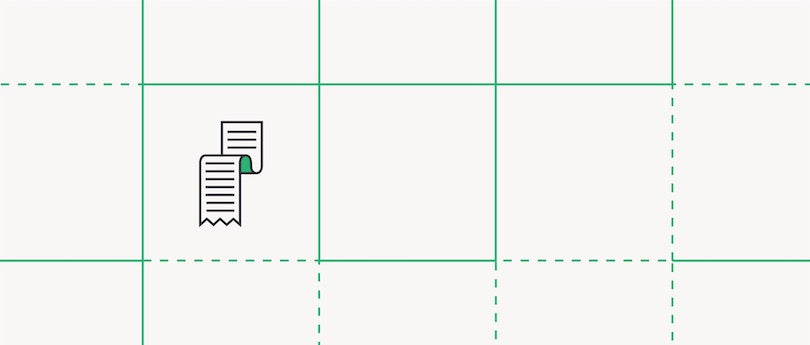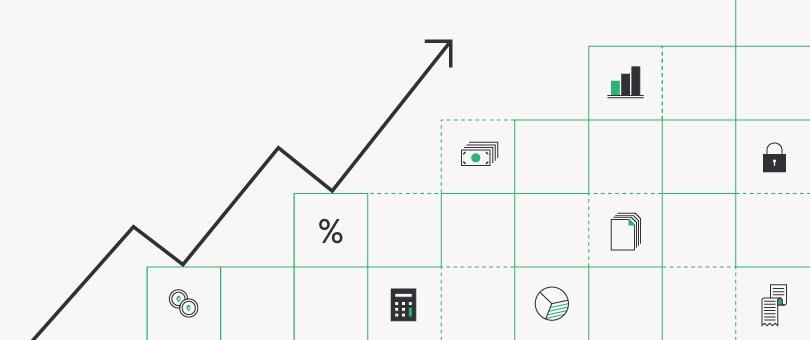There’s a familiar saying: “Give a man a fish, and he’ll eat for a day. Teach a man to fish, and you’ll feed him for a lifetime.” But what if that man doesn’t know what to do with the fish once he catches it?
When you understand how small-business finances works, you’ll know what to do with “the fish”—in other words all the money you’re making and spending. This means more than simply starting a low investment business. It means that knowing how to handle your finances properly gives your business a fighting chance to survive and grow.
In this guide, we’ll look at essential small-business finance skills for successful entrepreneurs, including building a budget, tracking spending, and creating financial statements that are easy to understand.
- Separating your personal and business finances
- Choosing a bank
- How to create a budget
- Understanding accounting, bookkeeping, and recordkeeping
- How to get started with bookkeeping
- Do-it-Yourself (DIY) bookkeeping
- Outsourcing your bookkeeping
- Keeping your business records in order
- Creating and reading financial statements
Separating your finances and limiting your liability

The first, and easiest, thing to do for your business’s financial well-being is separate your finances. Keeping your personal finances separate from your business finances offers many advantages, from simplifying your accounting to protecting your personal property and other assets.
Separating your finances has other advantages too. Calculating tax deductions, and overall tax preparation, is much simpler when your company has its own bank account. It’s also easier to figure out if that Wednesday afternoon lunch was with a client or a friend when your personal and business receipts aren’t mixed together. Even if you can easily distinguish one set of expenses from another, sorting a pile of paper come tax season wastes valuable time, and paying a chartered professional accountant (CPA) to do it for you can be expensive.
As your small business starts to grow, you might want to consider incorporating. When a business incorporates, it becomes a legal entity. That means if your business ever faces financial or legal trouble, your personal assets, such as your home or a college fund for your children, are, in most cases, protected.
It’s important to know when to incorporate. If you make your company a legal entity while it’s still in its early stages, you’ll no longer be able to claim any losses it incurs on your personal taxes. At the same time, the more mature a company becomes and the more assets it has, the more paperwork that’s required to incorporate it. In either case, expect the cost of incorporating to be somewhere between $1,000 and $2,000.
Get the capital you need without the complications
With Shopify Capital, you get the money you need to grow your business with just a few clicks. There is no lengthy application process and no paper forms to fill out.
Choosing the right bank
Not all banks offer the same services. Some have mobile apps, for example, some don’t. Some will tailor their services around your small business, while others will have a more standardized approach.
Corporate accounts are a little different from personal accounts, so here are some things you should consider when choosing a bank for your business:
- Does it offer online banking?
- What are its fees for business transactions?
- What kinds of interest rates does it have for business loans?
- Can it offer you a business credit card?
- Can you add other people and permissions to your account as your business grows?
Doing all your banking at one institution keeps things simple, but keep in mind that it’s not necessary. If your preferred bank doesn’t have competitive rates on loans, for example, it’s OK to look for a loan from another bank.
Types of accounts
When you open a bank account for your business, consider opening both a chequing and a savings account. The first will give you a place to manage your day-to-day revenue and expenses, while the second can be used for setting aside money for things like taxes or future investments in your business.
Transaction fees
Business bank accounts, like personal accounts, come in different tiers that allow a certain number of transactions for a monthly fee. Having an idea of how your business will receive payments and how many monthly purchases you’ll make through your account is helpful information to know when deciding what type of account to set up.
For example, if you’re dealing with several different vendors on a regular basis, you’ll want to make sure you have a low (or no) transaction fee on purchases. You might also want to see if your bank can offer you an account with no daily limit on debit purchases.
Loans and lines of credit
Even if you don’t need a loan or additional financing for your business right now, you might in the future. So ask a few questions up front about the bank’s lending requirements. Also ask about its interest rates on loans, the terms of its business loans and lines of credit, and what your small business would need to qualify for a loan.
Business credit cards
A credit card is a great way to build your business’s credit rating, giving you a better chance of securing loans and low interest rates in the future. Having a business credit card also can give you access to rewards, fraud protection, and extended warranties on purchases.
How to create a budget

As the saying goes, if you fail to plan, you plan to fail. You’ll never be able to see every bump in the financial road ahead, but you can avoid surprises and keep your business healthy by building a solid budget and keeping track of your money.
Creating a sample budget will give you a general idea of what to expect in your first months and years of operation. Over time, your budgets will become easier to create, and you’ll get better at forecasting expenses and revenues throughout the year. For now, let’s look at the types of things to include in your initial budget.
Expenses
A great way to start your budget is by writing out a list of every possible item you think your business will need—from the technology used to create your inventory to the day-to-day items in your office. A quick Google search for examples of budgets in your industry can help you figure out anything you might have missed.
One-time expenses
One-time expenses usually are big-ticket items you buy once (or sometimes every few years). This can include laptops, machinery, and office furniture. It can also include services like logo design or website development.
Fixed expenses
Fixed expenses are costs you reliably can expect to pay every month, and that don’t vary too much in price. This can include rent, insurance, internet service, website hosting, phone bills, and software subscriptions.
Variable expenses
Variable expenses fall somewhere between fixed expenses and one-time expenses—they occur more than once but vary in amount and are paid at irregular intervals. This might include materials to make your products, marketing costs, business travel, an accountant to file your taxes, or credit card processing fees.
Product pricing strategy
Coming up with the right price for your products is an important part of your budget. Here are some of the factors to consider when setting your price.
Cost of goods
The hard costs of the items you’re selling are usually straightforward. For example, if you’re running a hand-printed T-shirt shop, your material costs might be $8 per T-shirt and $3 for ink. But there’s more to setting a price than adding up hard costs.
Labor
Do you pay people to make your product or deliver your service? That cost needs to go in to your cost of goods sold. Even if you haven’t hired any staff yet, be sure to include the value of your own labour to help you evaluate the efficiency of your business. (If your own hourly “wage” ends up being unsustainably low, your business will need fine tuning.) It can also give you a good sense of when it’s time to start outsourcing tasks to someone else.
Packaging
If your business involves shipping product to customers, packaging and unboxing will play a significant role in how a customer experiences your brand. Your package is an extension of your product, so you’ll need to factor its cost into the cost of goods sold.
Shipping
Shipping is another key piece of getting your product to customers, and failing to estimate its cost correctly can throw off your budget. Things like size, weight, location, and speed all affect your shipping costs. Visit your local post office for help estimating your shipping.
Again, don’t forget to factor your own time into your shipping costs. You technically might be able to offer shipping within five days, but packaging up product and running to the post office on a daily basis isn’t an efficient use of time and will make shipping more costly by taking you away from other tasks.
Online shoppers expect to see a shipping charge added at the end of their purchasing process, but keep this cost reasonable. Customers faced with an exorbitant shipping cost may very well abandon their cart and not come back.
Processing fees
If you accept credit cards, you likely pay a fixed processing fee per transaction as well as an additional fee of around 3% of the order price. These charges vary based on the processing service you use, so shop around for one that makes sense based on your order volume. If your store is going to accept international orders, keep in mind that payment coming from outside your home country might incur higher fees on your end.
Accept credit cards directly with Shopify
Shopify Payments is the simplest way to accept payments online. It eliminates the hassle of setting up a third-party payment provider or merchant account and having to enter the credentials into Shopify.
Damage
Sometimes items get damaged, whether on their way to you or on their way from you to a customer. Hopefully the expense of replacing these goods will be a minimal cost for you, but it’s important to factor an expected amount of damaged inventory into your pricing. A Google search will give you a rough idea of what’s common for your type of business. Multiply the average percentage of loss in your industry by the cost of your product to come up with a loss estimate, then average that estimate into your pricing.
Returns
You may or may not choose to accept returns. If you selling artisan crafts, for example, returns might not be for you. If you do choose to accept returns, you can do one of three things:
- Charge a separate “restocking fee” to recoup some of the loss
- Raise your prices slightly to account for losses from returns
- Leave your prices the same, and trust that a generous return policy will mean increased sales
Keep in mind you’ll also incur the cost of credit card chargebacks for fraudulent or disputed transactions.
Brand and target market
How you present your brand will contribute directly to your pricing strategy. Are you a luxury business selling products at a premium? Are you a discount shop going after the low end of the market? The way you position your business is a less tangible factor of setting your price, but it’s definitely a factor.
Sometimes, raising prices can, counterintuitively, increase sales by conveying quality. Other times, the lowest price will always win. Know your market and price accordingly.

Free Reading List: How to Brand Your Business
A great brand can help your products stand out from the crowd. Get a crash course in small business branding with our free, curated list of high-impact articles.
Get our Branding reading list delivered right to your inbox.
Almost there: please enter your email below to gain instant access.
We'll also send you updates on new educational guides and success stories from the Shopify newsletter. We hate SPAM and promise to keep your email address safe.
Competition
There most likely will be other business out there offering products or services similar to yours. Research some of them to get a sense of how they’re pricing their items. You might want to offer a lower price than your competition to attract more customers, or you may want to use your brand to elevate the value of your product over theirs.
Projecting revenue
In the beginning, projecting sales is part research, part educated guess. The longer you’re in business, the better you’ll be at predicting these numbers and knowing when your peaks and valleys will be throughout the year. Like expenses, your sales will vary by industry.
If your business started as a side hustle, you may already have some preliminary sales data. Even a few numbers can help you figure out which of your products are bestsellers and what times of year your sales will be high or low.
If you have no data to start with, you still can gather useful information by talking to other business owners in your industry (if you don’t know any, your accountant might) and doing some research online. Chances are, with a little digging, you’ll be able to find some rough numbers on the level of growth to expect in your first year and which months will do the heavy lifting in terms of sales.
Understanding accounting, bookkeeping, and record keeping

In this section, we’ll look at three areas integral to keeping your company’s financial health on track.
Bookkeeping is the day-to-day tracking of your business’s transactions, such as sales made and expenses paid. Accounting interprets those transactions over longer periods of time. It lets you see if your business is profitable, which parts of your business are doing well (or not so well), the value of your business, and your cash flow. And record keeping is the organization of all the documents that make bookkeeping and accounting possible.
Let’s look in more detail at the differences between each of these financial tasks, why you need them, and how to manage them in a way that’s right for your business.
Accounting
There are two accounting methods small businesses can use—cash and accrual. You’ll need to pick a system before the end of your first tax year, and then stick to it every year following.
Cash versus accrual
Cash accounting records transactions only when money changes hands. So if you invoice a client, you wouldn’t recognize that revenue until their payment clears. In accrual accounting, sales, purchases, and expenses are recognized as soon as they’re billed.
Which method should you choose? Cash accounting is simpler to track, because transactions are recorded when payment is received or made. There’s no need to track accounts receivable or payable, and you always have a clear idea of exactly how much money you have. In other words, your books will always match your bank accounts.
Since accrual accounting records accounts payable and receivable, it can be more difficult to track cash flow, but it also helps you better forecast your business’s finances for the months and years to come.
Generally, you can choose the system that works best for you, but there are exceptions. In the United States, a business is required to use the accrual method if it carries inventory or generates an income of more than $25 million per year. In Canada, any income from self-employment (unless it’s from farming, fishing, or self-employed commission) must be recorded using the accrual method.
When you should talk to a CPA
If your business is still more of a side hustle, or if its finances are simple, you likely can skip enlisting the help of a CPA for now. There are plenty of small-business finance resources online you can reference.
But if your small business starts overshadowing your day job, talking to a CPA is highly recommend to make sure you’re on track. CPAs don’t just file your taxes—they also can help you with financial strategy, tax planning, lease negotiations, financial reporting, tax compliance, and treasury management.
A CPA can look at your business plan and budget, help shed light on anything you might have missed, and get you set up with a bookkeeping process tailored to your industry.
Choosing a CPA is similar to choosing a bank. They have to be the right fit for you and for your business. A great way to get recommendations for CPAs is by asking other business owners you know and trust in your industry. Make sure to talk to the CPA one-on-one to get a sense of whether or not they’re the right CPA for you.
Your CPA can help you avoid surprises down the line by helping you figure out how much tax you need to collect and set aside, which expenses to track and deduct, and which legal structure your business should use.
Bookkeeping

Bookkeeping is the tracking of a business’s revenue and expenses. It allows you to keep tabs on your company’s financial health and makes your CPA’s job easier come tax time. Basically, bookkeeping involves entering your sales and expenses into a spreadsheet and filing your receipts as a backup.
If you want to secure financing for your business at some point in the future, keeping your books up to date can help bolster a loan application or investment pitch. Well-managed finances and clear records allow potential lenders and investors make realistic projections of your company’s financial health and gives them confidence to invest in you.
Well-managed books also help your CPA take advantage of all eligible tax deductions, and catch banking errors in a timely manner, when they’re easier to reconcile. But the biggest benefit to keeping on top of your bookkeeping is always having a clear picture of where your business stands financially in the moment. Well-kept books can give you a sense of where your business’s high and low points will be over the course of the year. They can show you if your packaging costs are too high, or if you’re overspending on marketing.
Monitoring your books allows you to see in real time what’s working well and what needs tweaking.
How to get started with bookkeeping
Now that you know why you need to stay on top of your bookkeeping, let’s look at how to do it.
Step 1: Choose an accounting method:
There are two types of bookkeeping systems: single-entry and double-entry. Deciding which system to use depends on how complicated your finances are.
Single-entry
If your business is small and you’re not making a lot of transactions, single-entry is the simplest way to keep your books. In this method, entries are recorded a single time, marked as either an input (revenue) or an output (expenses), while things like inventory and capital are tracked more casually. Single-entry doesn’t offer all the checks and balances of double-entry, but if you’re doing your own bookkeeping, this is probably the system to choose.
Double-entry
With the double-entry system, every transaction is entered into your books twice. It’s more complicated than single-entry, but it provides more information about your business. Unlike single-entry, double-entry bookkeeping tracks your assets and liabilities in addition to revenue and expenses and has the checks and balances needed to reduce errors. Double-entry bookkeeping also gives you the information needed to create detailed financial statements showing which areas of your business revenue is flowing into and out of.
Double-entry is a more robust system. If you’re hoping to get a business loan or bring on investors, or if you’re hiring staff and carrying a large inventory, it’s highly recommended you use double-entry.
Double-entry is a little complicated, so let’s walk through an example. Say you run an online t-shirt shop. You order blank t-shirts from a supplier, screen print them yourself by hand, and then ship them to your customers. When you get a shipment from your supplier, you would enter that expense debit to your cash account, and as a credit to your product account. When the credit and debit columns of your ledger are added together, they should equal zero. This is what it means when someone refers to books being “balanced.”
Step 2: Keep good records
At tax time, the burden is on you to show the validity of all of your expenses, so keeping supporting documents like receipts and invoices is crucial.
The IRS accepts digital records, so if you use a cloud-based system like Dropbox, Evernote, or Google Drive to upload your documents, you’ll never have to deal with smudged receipts. You also can use a receipt-tracking app, like Shoeboxed.
We’ll talk more about recordkeeping later in this guide.
Step 3: Enter all your transactions somewhere
Bookkeeping involves keeping track of your finances on a spreadsheet. Whether you use Excel, online accounting software, or good old-fashioned pen and paper, you’ll need to choose a system that makes it easy for you to enter every sale and purchase. At minimum, you need to track amounts, dates, vendors, and clients.
Step 4: Categorize your transactions
Categorizing your transactions is the last piece of the bookkeeping puzzle.
The first and simplest part of categorizing transactions is one you’re likely familiar with: credits and debits. You’ll also need to categorize your receipts by “account.” Accounts help add more context to your bookkeeping.
Accounts generally are broken down into five types:
- Assets. An asset is something your company owns, such as cash, a building, a computer, inventory, or even intellectual property. Basically, assets are anything your company could sell if it needed to.
- Liabilities. The most common form of business liability is debt. So if you have a business loan, this would go in the liability category. Accounts owed would also count as liabilities.
- Equity. Equity is any cash investment or drawing made by the owner of a company.
- Revenue. Revenue is any income received from the sale of goods or services.
- Expenses. Expenses are any money paid out for the everyday running of your company. This could include internet service, printing supplies, and office space rental. Expenses are different from assets because they generally hold no potential for resale, or are consumable (like office stationery).
There’s lots of flexibility in the way financial transactions can be categorized in your books. The most important thing is to decide on a system and stick to it consistently. If you haven’t done this before, consulting a professional bookkeeper can make the task of categorizing your transactions run smoothly and also help ensure your categories are in line with those of other businesses working in the same space as you.
Depending on how big your business is and how complicated your financial needs are, you have a couple of options for how you handle your bookkeeping.
Do-it-yourself (DIY) bookkeeping
If your business is more of a side hustle, if your finances are tight, or if your bookkeeping needs are simple, it’s worth considering the DIY approach.
That said, even if you plan to keep your own books, it’s a good idea to consult a CPA before you start. It’s possible to make errors with even the simplest bookkeeping, and those errors could cost you at tax time. Money spent getting a CPA to help you set up your books is money you’ll save paying a CPA to sort through and correct errors later.
When taking the DIY approach, you can use a basic spreadsheet to track your finances, or you can use online accounting software like Quickbooks, Xero, or Wave.
Using a spreadsheet is free, but you’ll have to work a bit to create financial reports. Online accounting software has a monthly cost, but it can create reports for you.
Outsourcing your bookkeeping
If your business is a little more complicated, or has moved out of the side-hustle stage, it might be time to outsource your bookkeeping. We recommend hiring someone else to do your bookkeeping if:
- You don’t have the time to keep on top of it
- Your finances have gotten too complicated for you to confidently maintain your books
- Your efforts would be better spent working on a different part of your business
- You’ve missed deductions at tax time or have accidentally kept your books incorrectly in the past
When you outsource your bookkeeping, you can hire a freelance bookkeeper, a bookkeeping firm, or an online bookkeeping service.
Hiring a local bookkeeper is a good option if most of your records are on paper or if you feel more comfortable meeting with your bookkeeper face-to-face. Hiring an online service, like Bench, could be the right choice for your business if you prefer to work online and your business isn’t cash-heavy.
At Bench, our bookkeepers do your books for you. We create the necessary monthly financial statements you need—all of which are accessible online—and provide you with everything you’ll need to hand to your CPA at tax time.
Keeping your business records in order

Without records—the documents that show what your company has been spending and earning over the course of a year—there’d be nothing for bookkeepers or accountants to do.
Records are legally required as proof that the information included in your tax returns is accurate. To maintain comprehensive records, you’ll need to keep:
- Receipts
- Bank and credit card statements
- Bills
- Canceled checks
- Invoices
- Proof of payments
- Financial statements from an online service or your bookkeeper
- Previous tax returns
Depending on where you live and the type of business you run, there might be other records you’re legally required to keep or additional tax forms you need to file. Talk to a CPA at the beginning of your tax year to get a clear idea of how best to maintain your records.
A good general rule is: if in doubt, keep it. It’s a lot easier to throw out a receipt later once you’re sure you don’t need it than it is to frantically dig through your recycling.
How to store your records
The good old shoebox is a classic trope for receipt and record storage, but it’s not the most effective system. An accordion folder is a step up, but accidents still can happen. Paper receipts can be damaged by water, fire, or a loyal (if excitable) canine friend. Paper can also fade over time, especially cash register receipts, and the last thing you want is to open your shoebox at tax time and find a lot of blank scraps.
There are myriad services available to track and store your documents digitally. Taking photos of receipts and uploading them, along with electronic bills and invoices, into a Dropbox or Google Docs folder is the online version of keeping an accordion folder. There also are lots of online services designed specifically to help make your record keeping as painless as possible:
- Shoeboxed allows you to scan receipts and digitally organizes their information . It also has a feature that auto-generates expense reports.
- FileThis automatically gathers information from electronic documents (like bills), saving you the trouble of uploading them.
- Expensify lets you scan and email receipts and electronic documents to create simple expense reports.
Creating and reading financial statements

Financial statements are reports created from your books. They’re a great way to check in on how your business is doing, make predictions about upcoming revenue and expenses, and decide when to invest in growing your business.
Financial statements might seem intimidating at first, but once you get a handle on them you’ll love the peace of mind that comes with having a strong grasp of your business’s finances.
Balance sheets
A balance sheet is a snapshot overview of your finances at any given point in time. It looks something like the online banking dashboard page, butut instead of showing your checking and savings accounts, the snapshot shows your company’s assets, liabilities, and equity.
Essentially, a balance sheet shows the formula Assets = Liabilities + Equity.
In the example of our T-shirt company, a simple balance sheet might look like this:
November
ASSETS
Bank account: $2,000
LIABILITIES
Vendor invoice: $500
EQUITY
Retained earnings: $1,500
December
ASSETS
Bank account: $6,000
LIABILITIES
Vendor invoice: $1,000
EQUITY
Retained earnings: $5,000
Income statement
An income statement takes a closer look at—you guessed it—your business’s income, breaking it down into expenses and revenue, then further breaking those amounts down into individual line items.
Income statements look at things like:
- Revenue: how much money you brought in selling goods (like a T-shirt)
- Cost of good sold: the amount of money you spent on those goods before selling them
- Operating expenses: other costs associated with running your business, like electricity, internet, marketing, and business cards.
You can use the above values to calculate your gross profit (Revenue - Cost of Goods Sold) and your net profit (Gross Profit - Operating Expenses).
Gross profit shows you how much income you’re bringing in on specific items. If your gross profit is low, you might want to consider increasing the price of each item sold.
Net profit tells you how much income your business is bringing in after expenses, and gives you a picture of the overall profitability of your business. It’s a way of factoring all of the other expenses your business incurs into the cost of your product. If your net profit is low, you might need either to decrease your operating expenses or increase the cost of your product.
A simple income statement might look something like this:
Revenues
T-shirts sold: $4,000
Expenses
Cost of goods sold: $675
Utilities: $50
Internet: $60
Studio rent: $200
Website hosting: $15
Total: $1,000
Net income: $3,000
If you’re doing your own bookkeeping, you can find a simple income statement template here.
Cash-flow statement
Cash-flow statements show you how much cash your business has earned or used during a specific time period. If you’re using the cash accounting method, you can already see how much cash you have available.
While it’s important to monitor your business’s revenue, it’s equally (if not more) important to monitor cash flow.
Revenue is the overall profit you have coming into your business in the long term. Cash flow is the amount of liquid cash you have access to at any given time. Cash flow is handy if you have to pay for materials upfront. Even if you’re going to be generating a lot of revenue from sales, you still need cash available to pay your vendors.
Business finance separates myth from math

Even if your company has the best product in your industry and award-winning marketing, it still can fail through lack of financial awareness. Keeping your records, books, and accounting in order will give you a clear picture of your company’s financial health and needs. This, in turn, will enable you to make the best decisions for your company’s future.
Whether you’re going it alone or hiring a financial professional, it always helps to seek advice from other successful entrepreneurs in your field or to consult with a good CPA.
Knowing how to track and manage your finances will give you peace of mind that more than makes up for any challenges you may face building the skill. And the more you learn to manage money, the easier and more intuitive it will become.
About the author: Altaira Northe writes for Bench, the online bookkeeping service that does your books for you. She’s also a writing coach and runner who splits her time between Toronto and B.C.’s Sunshine Coast.

